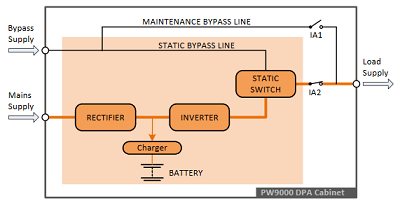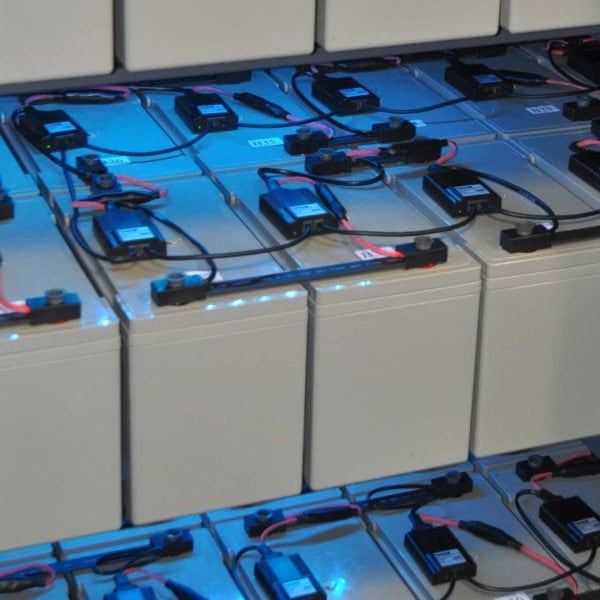Organisations’ increased dependence on their computing resource, together with growing concerns over UK grid power quality and availability, highlight the critical role of UPS systems. A recent survey from KOHLER Uninterruptible Power Limited (KUP), a KOHLER company, reveals users’ experience of mains supply problems, their concerns for the future and their priorities for UPS protection. With these results in mind, this article explains the threats posed by power quality problems today and how UPS systems can reliably provide protection you need. It also looks at factors likely to affect the future of the UK’s power grid.
Most organisations today have become critically dependent on ICT equipment. Business’ continued survival depends on their guaranteed ability to support communications and on-line transactions in real time, on a 24/7 basis. Yet the equipment itself, even while it fulfils this role, is in turn critically dependent on clean, uninterrupted electrical power – a need that increasingly cannot be taken for granted from the National Grid mains supply. A UPS installed between a site’s incoming mains and its ICT equipment can provide suitable protection. Clearly for this installation to be effective, it must filter all the threats the incoming mains can pose, and it must itself be utterly reliable. Furthermore, it must be future proofed against widely forecast deterioration in UK grid electricity quality, as well as possible changes within the site demands it is protecting.
Survey
Understanding ICT equipment users’ views and experience is essential in assessing the importance of the issues listed above. Accordingly, KUP recently carried out a survey to gain an insight in to their effects. In the survey, over 75% of the respondents experienced a power outage within the last twelve months that required their UPS to protect their critical equipment. Users do not expect this situation to improve, with 78% believing that UK power reliability is going to become a major concern within the imminent future.
Given the critical requirement to provide protection on demand, it’s hardly surprising that 86% of the survey’s respondents regard reliability as the UPS’s most important attribute. However, most also recognise that guaranteed power protection takes more than just the UPS hardware. Over 72% ranked quality of service as highly important or important, while over 90% consider maintenance and emergency call out support to be as important to their business as the hardware itself. Demonstrating to UPS vendors’ that product design features as well as support capabilities are both significant factors in buyers’ selection process.
Mains-born power quality threats
According to an Office of Gas and Electricity Markets (Ofgem) Quality of Supply report (2001 – 2006) a very high percentage of outages – 93% in fact – are unplanned, which explains why the survey respondents who reported experience of outages needed UPS protection. However, power outages are not the only mains-borne events that can damage sensitive equipment; power quality issues can also cause equipment damage and loss of data. Spikes, for example, are short duration rapid voltage transitions which can be induced by thermostats or other equipment switching heavy electrical currents, or by power supply companies performing load switching. Nearby lightning strikes are also particularly serious sources. Spikes inflict both positive and negative voltage excursions which can damage or destroy electrical and electronic components. Additionally, they can corrupt software, causing a problem that becomes compounded if corrupted files are subjected to further processing before detection.
Voltage excursions can appear as surges or sags as well as spikes. Surges are sustained voltage increases above normal lasting for more than one cycle, typically appearing after a large load is switched off or a substation performs load switching. With a relatively long duration, they can degrade switch-mode power supply components and lead to premature hardware failures. Sags are drops in the mains supply that can last for several cycles. Similar in character to negative spikes, although of much greater duration, sags are common events usually caused by switching on large loads such as air conditioning or rotating machinery. Sags can reduce mains voltage levels enough to trigger computer re-booting.
Electrical noise can be caused by lightning strikes as well as load switching, cable faults, nearby radio-frequency equipment and other sources. Computers can ‘hang’ and data can be corrupted as a result. Problems can also arise from harmonics typically generated by non-linear loads, which can draw current from the mains supply in large peaks. Computers, photocopiers, laser printers, variable-speed motors and other loads containing controlled rectifiers, switched mode power supplies or rotating machines are particularly liable to generate harmonics. Such problems can build up progressively as the number of PCs – usually powered by switched mode power supplies – increases within a user’s site. Harmonics cause a disproportionate rise in current, elevate temperatures and possibly lead to component failures and general equipment overheating.
Furthermore, whereas a complete loss of power is known as a blackout, brownout conditions also exist. Brownouts are identical to sags but of much longer duration, and are generally more serious. They occur when the mains supply capacity is insufficient for its present load. Depending on the supply company response, brownouts could last for several hours in extreme circumstances.
UPS protection
A correctly specified and installed UPS system with matching generator units can protect ICT equipment from these problems, maintaining automatic 24/7 support for as long as required. UPS components include a rectifier, ups battery, an inverter and a static switch. Within a modern system these are usually set up in an online configuration. This means that during normal operation the incoming mains feeds the rectifier which in turn supplies the inverter with a stable DC voltage as well as float-charging the battery. If the mains supply transgresses acceptable limits, power to the inverter is provided by the battery until either normal mains are restored or the battery is exhausted. As the battery nears exhaustion, the static switch can be used to transfer the load to a bypass supply. An on-line design offers the greatest degree of critical supply integrity as the load can be supplied with processed power at all times. The rectifier and inverter block mains borne noise and voltage transients as well as providing a well regulated output voltage.
For this protection to be valuable, the UPS configuration must offer very high availability and resilience to failure. These attributes can be achieved using modern transformerless technology and the size, weight and energy savings it facilitates. For example, atypical advanced 120kVA UPS can be implemented as a 263 Kg unit with a 0.42 m² footprint giving a powered density of 286 kW/m², compared with an earlier transformer-based implementation requiring a 1.32 m² footprint and weighing 1,200 Kg. This has enormous implications for power protection, because UPS systems can become sets of rack-mounting modules rather than monolithic floor standing units. Such configurations improve reliability through improved resilience to failure and improved availability.
Increased resilience to failure is achieved because these rack mounted modules can easily be built into an N+1, or even N+N, redundant configuration. For example, a 100kVA load could be supported by a modular UPS comprising six 20kVA modules. This means the UPS can fully support the critical load even if one module fails: In this way the UPS is resilient to failure. The modular design also increases UPS availability because a faulty module can be quickly replaced, typically within about half an hour, compared with the six hours typically needed for component level diagnosis and repair. Modules can also be ‘hot swapped’, without needing to divert the critical load onto raw mains. Availability is defined by the relationship between Mean Time Between Failures (MTBF) and Mean Time To Repair (MTTR), so reducing MTTR increases the UPS’s availability.
Factors for the UK’s power future
The UPS’s role has become increasingly critical over the years, reflecting that of the equipment it protects. This criticality is likely to be exacerbated as the UK power grid faces growing pressure over the years to come. Almost a third of the country’s generating capacity will be lost as nine ageing coal and oil-fired power stations must close by 2015 to comply with EU pollution laws, and we rely increasingly on imported gas as North Sea supplies have become increasingly depleted. Meanwhile, according to the Department of Energy and Climate Change (DECC), overall demand for electricity is expected to increase by 1% per annum until 2022/3. Initiatives to mitigate the threat of an energy gap are challenged by a number of factors. These include the lead time required for building new power stations, the requirement for significant capital expenditure in an environment where wholesale electricity prices are expected to become more volatile, and the uncertain nature and size of future energy demand.
Development of new power resources is also constrained to meet the UK Low Carbon Transition Plan, as published by DECC. This calls for 40% of the UK’s electricity to be obtained from low carbon resources by 2020. These ‘low carbon resources’ include renewable energy, next generation nuclear power stations, and fossil fuel plants with carbon capture and storage. With these pressures on energy supply, Ofgem has warned that demand for electricity and gas could outstrip supply in the future, causing a national energy crisis. They suggest that power cuts could start as early as 2016, which is three years earlier than previously thought.
Of course no-one knows exactly what the future will bring. The National Grid has presented ‘Gone Green’, a scenario for 2020 in which they show how the UK’s energy demands could be achieved while complying with Government climate change targets. However, the success of this depends on sufficient commitment from the Government, and enough strategic investment put into place, fast enough for the scenario’s challenging targets to be met. These realities, coupled with their own operating experience, suggest why 78% of the survey’s correspondents expect power supply reliability to become a major issue within the next ten years. Against this background, the case becomes irrefutable for a UPS system that protects user equipment from mains power supply difficulties already being experienced, as well as those arising from an uncertain future power grid environment.




